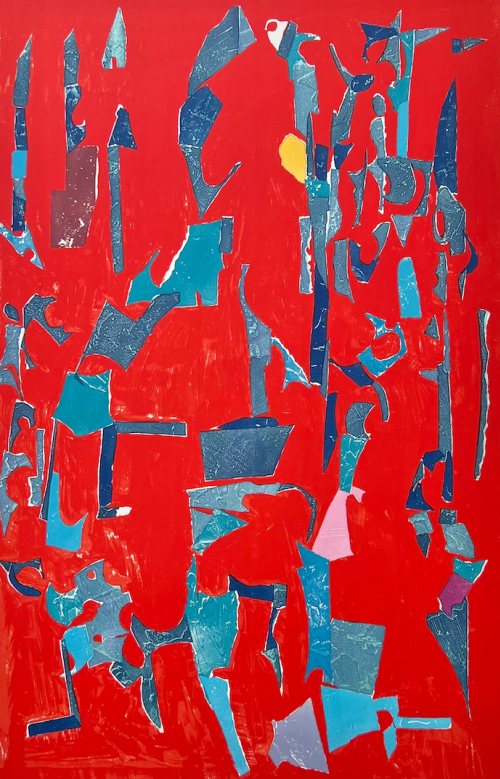About the artist:
Artist of "The Russian Abroad", a representative of "Paris School" and a founder of "Lyric Abstractionism".
At the age of 18 Andre Lanskoy fled the Russian revolution, first relocating to Ukraine then Paris, where he settled
in 1921. There he began to study painting at the "Academie de la Grande Chaumiere".
Early works by Lanskoy are influenced by his teachers Sergey Sudeikin and Alexandra Exter, were characterized
by a primitivist interpretation of the subject, combined with bright colors and a density of texture.
Later, this devotion to color and light was to define Lyrical Abstractionism, of which Lanskoy was the precursor.
Characterised by a loose gestural style charged with beauty and harmony, Lyrical Abstraction - more a senuous
and romantic manifestation of Abstract Art than a school in its own right - became one of the most significant
post war European art tendencies, bestowing upon Lanskoy, as a consequence, his place in the history of art.
In addition to painting, Lanskoy is also known for his collages, tapestries, mosaics, carpet sketches, and book
illustrations, including "Cortege" by Pierre Lekyuir, in 1959, "Journal d'un Fou" by Nikolay Gogol (not finished),
"The Book of Genesis", in 1966.
In 2006, 30 years after the artist's death, his art was finally shown in Russia. His two retrospective exhibitions
were at the Pushkin State Museum of Fine Arts in Moscow and at Russian Museum in St. Petersburg.
Artworks by Andre Lanskoy are represented in numerous major public collections, including the Musee National
d’Art Moderne, Centre Georges Pompidou, Musee d’Art Moderne de la Ville de Paris, Solomon R. Guggenheim
Museum and the Museums of Modern Art of Antwerp, Mannheim, Philadelphia, Toledo, Colmar, Grenoble, Lille,
Tourcoing, Le Havre, Saint-Etienne, Villeneuve-d’Asq and Mulhouse.










